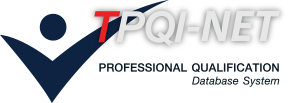หน่วยสมรรถนะ
Apply mathematics and physics in aviation maintenance.
สาขาวิชาชีพการบิน
รายละเอียดหน่วยสมรรถนะ
| 1. รหัสหน่วยสมรรถนะ | AVT-FTN-3-019ZA |
| 2. ชื่อหน่วยสมรรถนะ | Apply mathematics and physics in aviation maintenance. |
| 3. ทบทวนครั้งที่ | - / - |
| 4. สร้างใหม่ |
|
ปรับปรุง |
|
| 5. สำหรับชื่ออาชีพและรหัสอาชีพ (Occupational Classification) | |
|
|
|
| 6. คำอธิบายหน่วยสมรรถนะ (Description of Unit of Competency) | |
| This skill unit requires the application of the principles of mathematics and physics necessary to support the development and implementation of aeronautical skills, aircraft systems and component maintenance. It also meets the requirements of the licensing program in the manual ICAO Doc 7192 / EASA Part 66standards. | |
| 7. สำหรับระดับคุณวุฒิ |
| 1 | 2 | 3 | 4 | 5 | 6 | 7 | 8 |
|---|---|---|---|---|---|---|---|
| 8. กลุ่มอาชีพ (Sector) | |
| 7232 Aircraft Mechanics | |
| 9. ชื่ออาชีพและรหัสอาชีพอื่นที่หน่วยสมรรถนะนี้สามารถใช้ได้ (ถ้ามี) | |
| N/A | |
| 10. ข้อกำหนดหรือกฎระเบียบที่เกี่ยวข้อง (Licensing or Regulation Related) (ถ้ามี) | |
| ICAO Doc 7192 / EASA Part 66 | |
| 11. สมรรถนะย่อยและเกณฑ์การปฏิบัติงาน (Elements and Performance Criteria) |
| หน่วยสมรรถนะย่อย (EOC) | เกณฑ์ในการปฏิบัติงาน (Performance Criteria) | รหัส PC (ตามเล่มมาตรฐาน) |
รหัส PC (จากระบบ) |
|---|---|---|---|
| 101308.01 Apply mathematical techniques in aviation maintenance. | 101308.01.01 Arithmetic, basic algebra and geometry are used incalculations relating to aviation maintenance. | 101308.01.01 | 70980 |
| 101308.01 Apply mathematical techniques in aviation maintenance. | 101308.01.02 Graphicalrepresentations , simple trigonometric principles and methods are applied inaviation maintenance settings. | 101308.01.02 | 70981 |
| 101308.02 Apply physics laws and principles in aviation maintenance. | 101308.02.01 Statics principles, Kinetics principles, Dynamicsprinciples, Fluid dynamics principles, Thermodynamics principles, laws andtechniques are applied in aviation maintenance settings. | 101308.02.01 | 70982 |
| 101308.02 Apply physics laws and principles in aviation maintenance. | 101308.02.02 Typical applicationsof light characteristics, application of the principles of wave motion andsounding aviation maintenance settings are explained. | 101308.02.02 | 70983 |
| 12. ความรู้และทักษะก่อนหน้าที่จำเป็น (Pre-requisite Skill & Knowledge) | |
| N/A | |
| 13. ทักษะและความรู้ที่ต้องการ (Required Skills and Knowledge) | |
|
(ก) ความต้องการด้านทักษะ
(ข) ความต้องการด้านความรู้
|
|
| 14. หลักฐานที่ต้องการ (Evidence Guide) | |
|
|
|
| 15. ขอบเขต (Range Statement) | |
|
|
|
| 16. หน่วยสมรรถนะร่วม (ถ้ามี) | |
| N/A | |
| 17. อุตสาหกรรมร่วม/กลุ่มอาชีพร่วม (ถ้ามี) | |
| N/A | |
| 18. รายละเอียดกระบวนการและวิธีการประเมิน (Assessment Description and Procedure) | |
|
|
|
